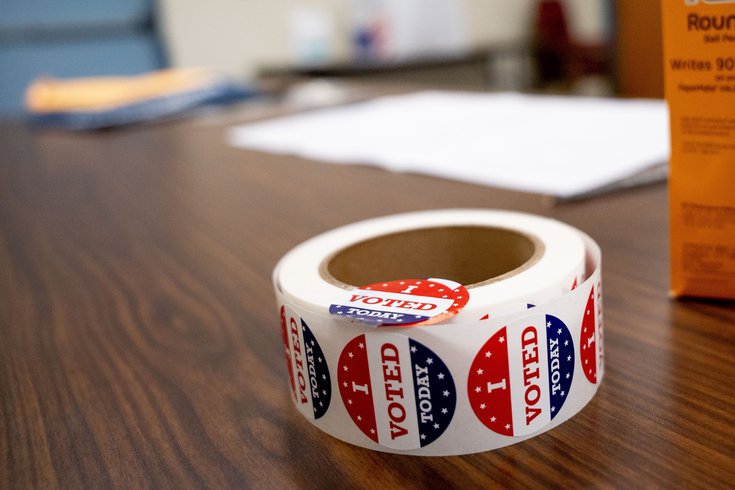
September 23, 2020
 Michael Candelori/For PhillyVoice
Michael Candelori/For PhillyVoice
Philadelphia elections officials should prioritize in-person polling locations ahead of the November election, according to a report conducted by Human Rights Watch.
The consolidation of polling places during the Pennsylvania primary election may have suppressed Black voters because of their preference to vote in person, a new report suggests.
Human Rights Watch, an international nonprofit organization, examined the impact of changes made by election officials during the 2020 primaries. The report singled out Philadelphia and Pennsylvania, claiming consolidations may have kept many people from casting ballots – particularly voters of color – despite efforts to expand mail-in voting access.
The report, dubbed What Democracy Looks Like: Protecting Voting Rights in the U.S. during the COVID-19 pandemic, was based on an analysis of voting data and first-hand interviews with voters, poll workers and election officials.
The June primary was Pennsylvania's first election since a 2019 law permitted any registered voter to request a mail-in ballot. Election officials also set up drop-off bins were voters could submit their ballots. About 1.5 million Pennsylvania residents voted by mail.Philadelphia's board of elections reduced polling locations, citing several challenges caused by the coronavirus pandemic: recruiting poll workers, identifying more spacious locations to allow social distancing and difficulties acquiring personal protective equipment and disinfectant products.
Of the more than 800 polling places typically used for elections, only 190 were open during the primary. That accounts for more than a 75% reduction.
As a result, Philly had a lower voter turnout in the 2020 primary than it did during the 2016 primary, according to the report. Only 32% of registered voters participated, down from 39% in 2016.
However, other variables may have been at play. The 2016 primary occurred before Donald Trump and Hillary Clinton had become the presumptive Republican and Democratic presidential nominees. This year, Trump and Joe Biden already had become the presumed nominees.
Yet, many voters did not know about the reductions prior to the election, according to the report. Voters who found their new or consolidated polling locations faced a number of challenges, including lengthy travel times, long lines, overcrowding, an increased risk of exposure to the coronavirus and confusion.
"In some jurisdictions, in-person voters were forced to search for new polling locations, wait in long lines, or make no-win choices between their health and their right to vote," the report said.
Statewide, polling places decreased by 10.7%, the report found. Roughly 26% of Pennsylvania zip codes experienced a reduction in polling place, affecting 5.7 million people – 45% of the state's population.
In Philadelphia, the reductions affected similar numbers of white and non-white voters, the report found. But Black voters ended up disproportionately affected because they are less likely to vote by mail and less likely to own a car to drive to new polling locations. The city's polling places traditionally are within a short walk of a voter's residence.
Human Rights Watch recommended election officials increase the number and accessibility of polling places and prioritize voter education efforts to prevent confusion on how to vote in the general election. The group also suggested drop boxes for mail-in ballots be placed near polling places or other easily accessible locations, particularly in neighborhoods populated by voters of color.
Philly election officials have said polling places will not be reduced for the Nov. 3 election.
Still, the coronavirus pandemic has prompted concerns that many voters will opt to stay at home instead of voting at cramped polling places with long lines. As a result, many states, including Pennsylvania, have sought to make mail-in voting easier.
Roughly three million Pennsylvania voters are expected to cast mail-in ballots prior to the Nov. 3 general election.
Follow Pat & PhillyVoice on Twitter: @Pat_Ralph | @thePhillyVoice
Like us on Facebook: PhillyVoice
Add Pat's RSS feed to your feed reader
Have a news tip? Let us know.